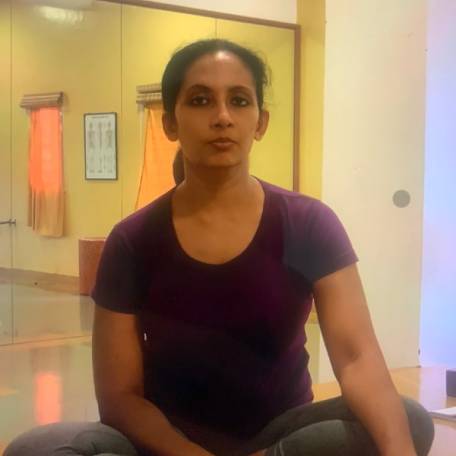What is Iyengar Yoga?
Stemming from the depths of his own rigorous practice, Iyengar’s teachings have systematically evolved precise posture (asana) and breathing (pranayama) techniques with a firm philosophical base; according to this unique perspective, asana and pranayama are the means by which the practice of yoga can be internalized. This method of yoga is recognized for its thorough exploration of poses as they relate to the physical, emotional, spiritual, physiological and psychological aspects of each individual student. Yogic studies in the iyengar tradition move from gross to subtle. Since one’s gross physical body that includes arms, legs , the spine etc is readily tangible and perceptible to everybody, instructions directed at this level can easily be understood by one and all. With time, the practice transitions to a deeper plane that addresses the organic body and mind.
As the practice matures, the student is refined in their study of the subject and can penetrate it with a more mature and holistic approach. Practice of pranayama begins around this time as students can understand and relate to aspects of breath training. Practitioners readily realize that the subject is not just physical but in fact a deep subtle approach that undoubtedly requires the integration and application of the mind. Iyengar’s teachings are deeply grounded in the yoga sutras of Patanjali, an ancient summation of the path of yoga considered to be at least 5,000 years old.
In practice, Iyengar Yoga is known for:
- Precise body alignment, which is a focused approach that allows the body to develop harmoniously and in an anatomically correct way that is injury proof and nourishing. Regular practice of the Iyengar method and proper use of props will help achieve the correct position and experience the benefits of the pose.
- Correct sequencing of asanas has a powerful cumulative effect that develops strength, flexibility, stamina, concentration,balance and alignment on the physical , mental and emotional plane.
- Longer duration of stay in the poses builds stamina and gives time for the benefits of the poses permeate into the individual
- A safe and systematic progression of yoga postures to develop each student’s ability and skill
- thorough and tangible approach to asana and pranayama that allows practitioners to understand and experience subtle aspects of breath training and in the process, derive its physiological and psycho-mental benefits



